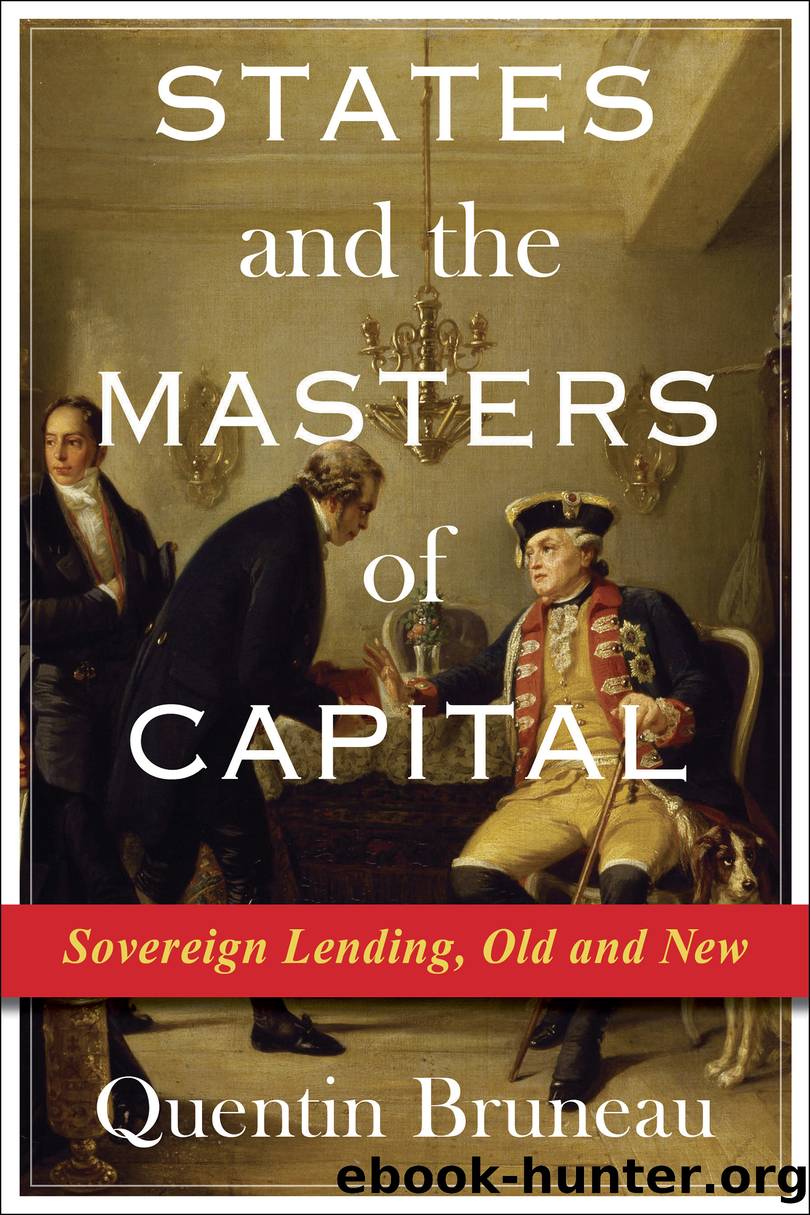States and the Masters of Capital: Sovereign Lending, Old and New by Quentin Bruneau

Author:Quentin Bruneau
Language: eng
Format: epub
Publisher: Columbia University Press
THE RESUMPTION OF PRIVATE SOVEREIGN LENDING
If by the interwar period the old lenders still had the upper hand, when, then, did the new sovereign lenders triumph? My claim is that this world was not fully developed at any point before the 1970s. Books on sovereign debt and sovereign lending tend to shun the period from the 1930s to the 1970s, preferring to focus on its immediate predecessor and aftermath.41 The reason for this is that private lending to foreign sovereigns declined markedly during these years. After the Great Depression and its flurry of sovereign defaults, private international capital flows largely came to a halt. This remained the case throughout the 1940s until the late 1950s. As one scholar puts it, âThe postwar consensus on regulating capital was opposite the nineteenth centuryâs validation of capital mobility,â an arrangement that constituted a key part of âembedded liberalism.â42
In this context, capital to fund sovereign debt mostly came through two channels. One channel consisted of official creditors, chief among them international financial organizations such as the International Monetary Fund (IMF) and the International Bank for Reconstruction and Development (IBRD), to which one should add government-to-government loans, and quasi-governmental agencies (e.g., export credit agencies).43 As one observer points out, it was only by 1980 that private international capital flows caught up with and overtook official aid.44 Although such forms of public sovereign lending are excluded from the purview of this study, which is concerned with sovereign lending by private financiers, it is nonetheless worth noting, again, that the way in which the IMF and the World Bank operated and engaged in sovereign lending was inherited from the League of Nations.
The second crucial source of funding, which did not involve any cross-border lending and mostly concerned economically developed countries, was private capital from domestic sources. Indeed, under the arrangements of the Bretton Woods system, private capital was trapped within national boundaries, rendering it unable to move around the world in search of the most lucrative opportunities.45 Capital controls allowed for what two economists have called the âliquidation of government debt.â46 Governments forced captive domestic financial institutions to hold low-interest-rate sovereign debt. It also limited the interest rates banks could charge on loans to individuals and companies, to give them an incentive to invest in sovereign debt. Put differently, this system was the equivalent of a tax on private creditors, which allowed governments to repay their debts without engaging in austerity measures, a set of arrangements sometimes referred to as âfinancial repression.â47
The era of Bretton Woods did not, therefore, witness the triumph of the new world of sovereign lending, as joint stock banks and rating agencies were either made redundant by official creditors or forced to buy domestic sovereign debt, rendering their statistical methods pointless, as they had almost no choice to lend to their âhomeâ sovereign. This is not only one of the reasons why credit rating agencies suspended their sovereign ratings until the 1970s but also why the rating activities of large joint stock banks âwere downsized, and did not regain importance until the 1970s.
Download
This site does not store any files on its server. We only index and link to content provided by other sites. Please contact the content providers to delete copyright contents if any and email us, we'll remove relevant links or contents immediately.
International Integration of the Brazilian Economy by Elias C. Grivoyannis(91278)
The Radium Girls by Kate Moore(11921)
Turbulence by E. J. Noyes(7936)
Nudge - Improving Decisions about Health, Wealth, and Happiness by Thaler Sunstein(7615)
The Black Swan by Nassim Nicholas Taleb(7010)
Rich Dad Poor Dad by Robert T. Kiyosaki(6405)
Pioneering Portfolio Management by David F. Swensen(6226)
Man-made Catastrophes and Risk Information Concealment by Dmitry Chernov & Didier Sornette(5921)
Zero to One by Peter Thiel(5686)
Secrecy World by Jake Bernstein(4646)
Millionaire: The Philanderer, Gambler, and Duelist Who Invented Modern Finance by Janet Gleeson(4376)
The Age of Surveillance Capitalism by Shoshana Zuboff(4210)
Skin in the Game by Nassim Nicholas Taleb(4162)
Bullshit Jobs by David Graeber(4095)
The Money Culture by Michael Lewis(4076)
Skin in the Game: Hidden Asymmetries in Daily Life by Nassim Nicholas Taleb(3929)
The Dhandho Investor by Mohnish Pabrai(3699)
The Wisdom of Finance by Mihir Desai(3654)
Blockchain Basics by Daniel Drescher(3507)
